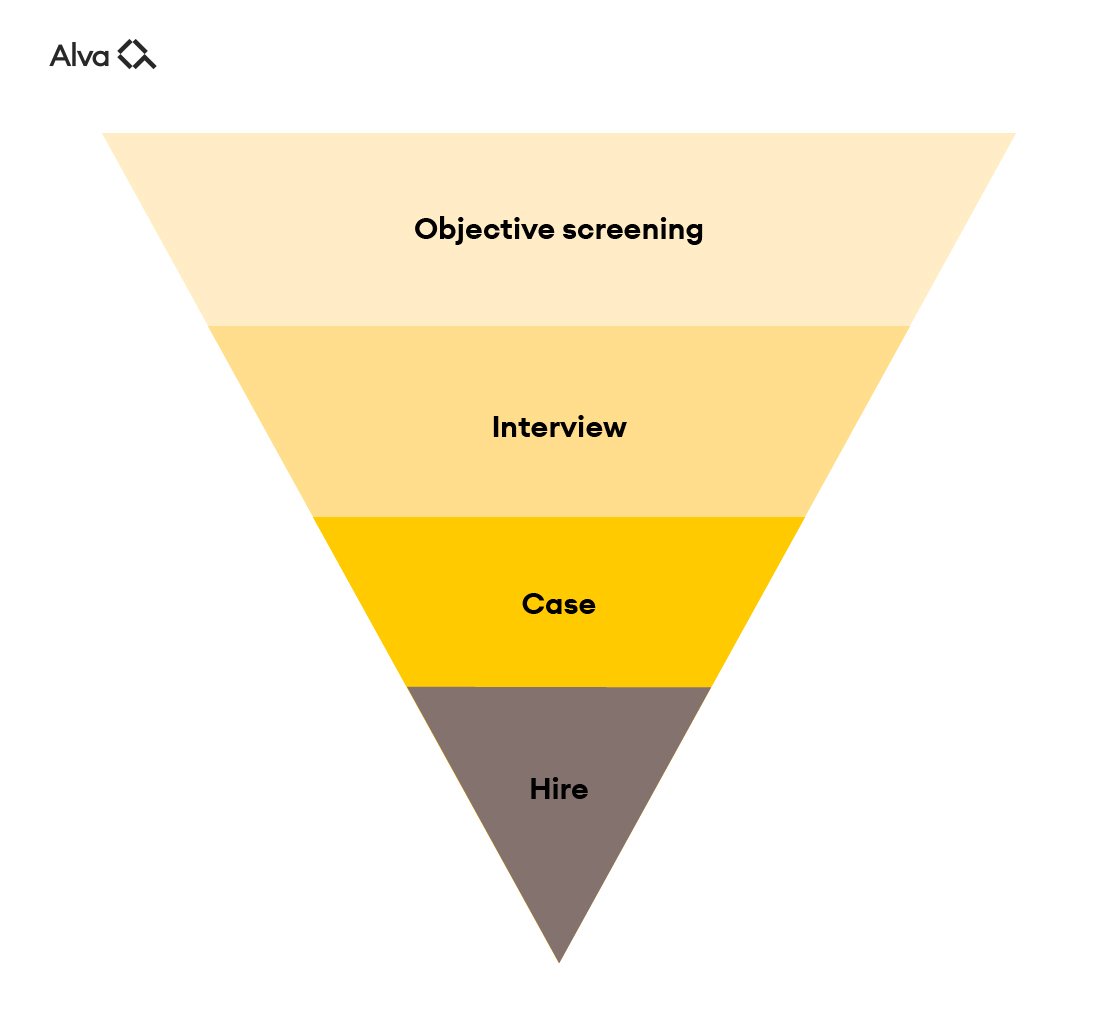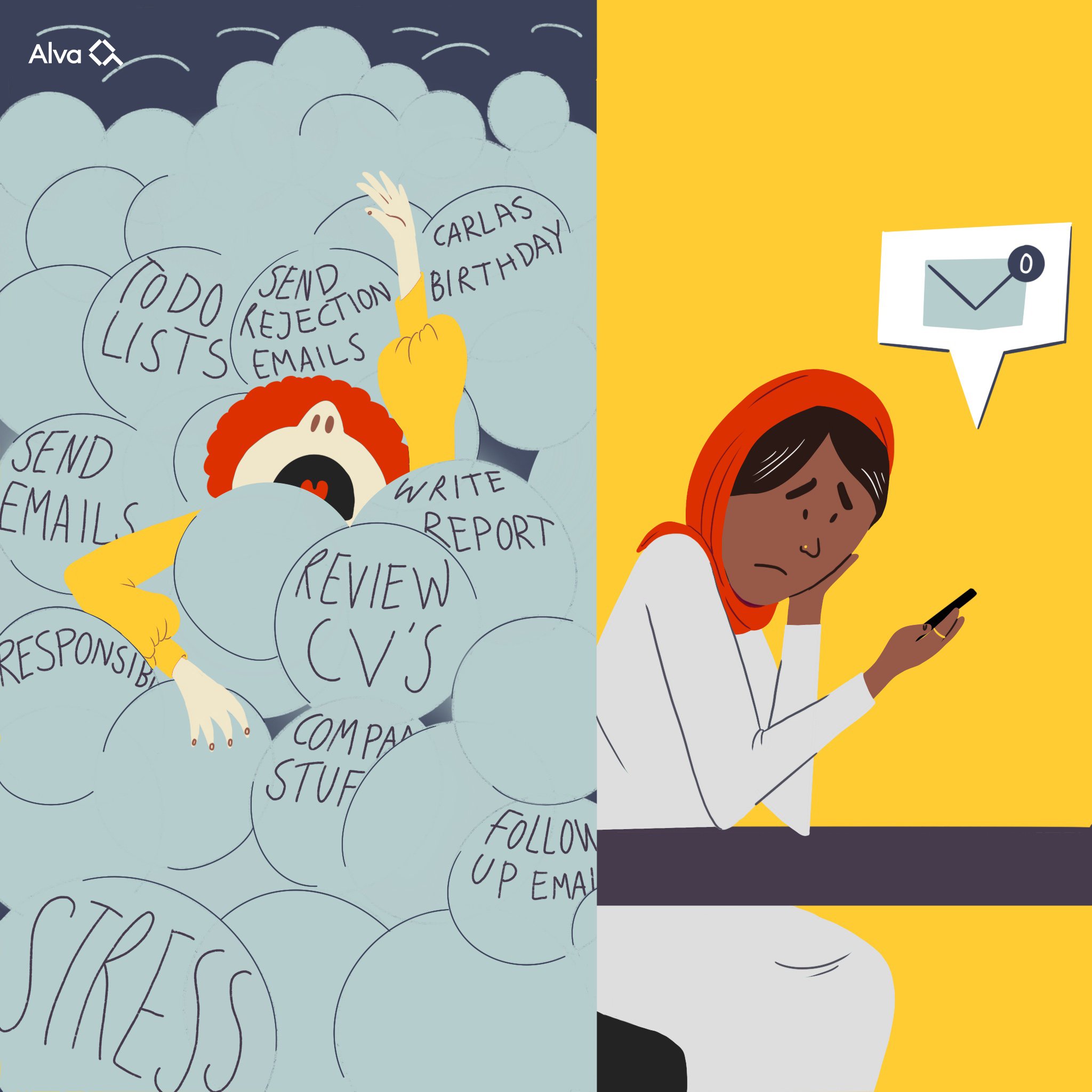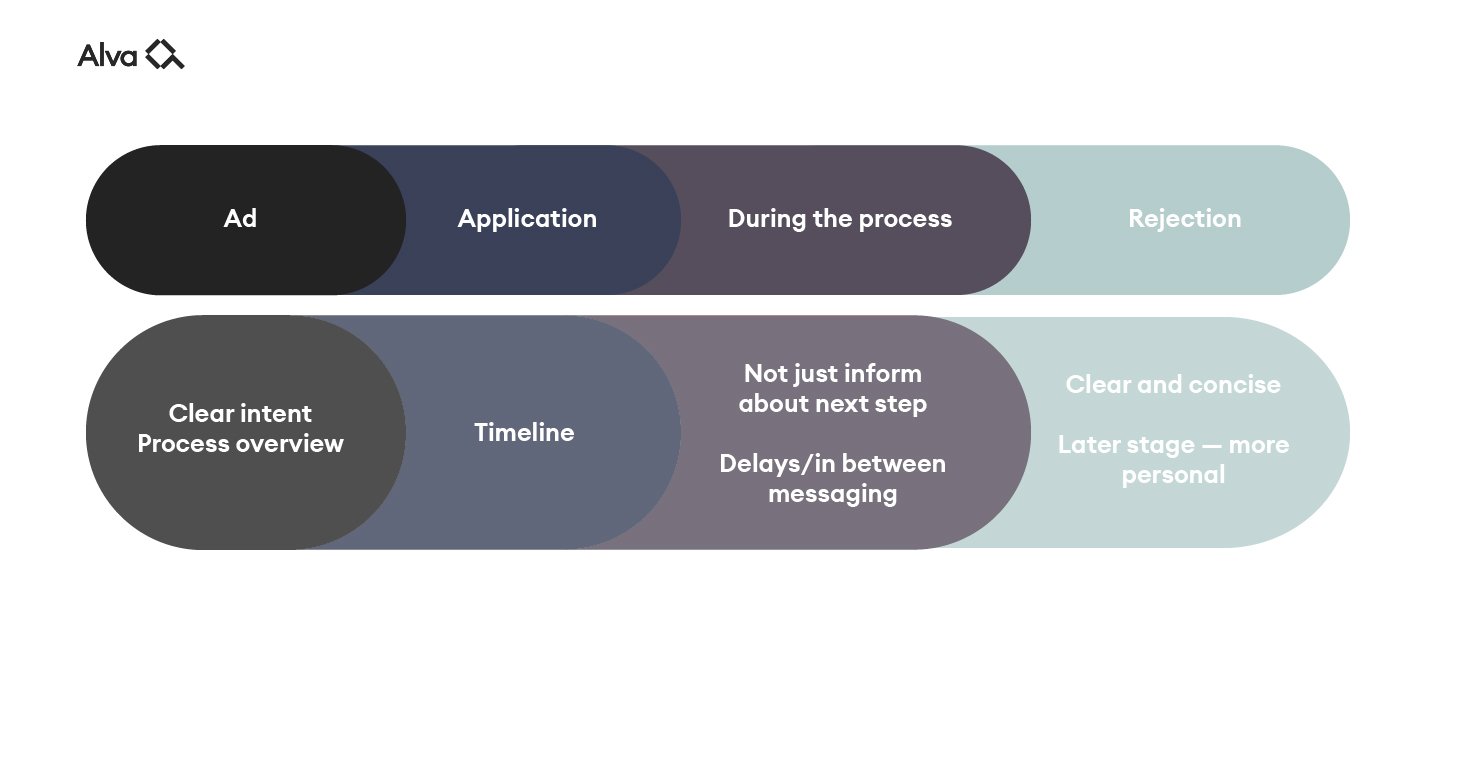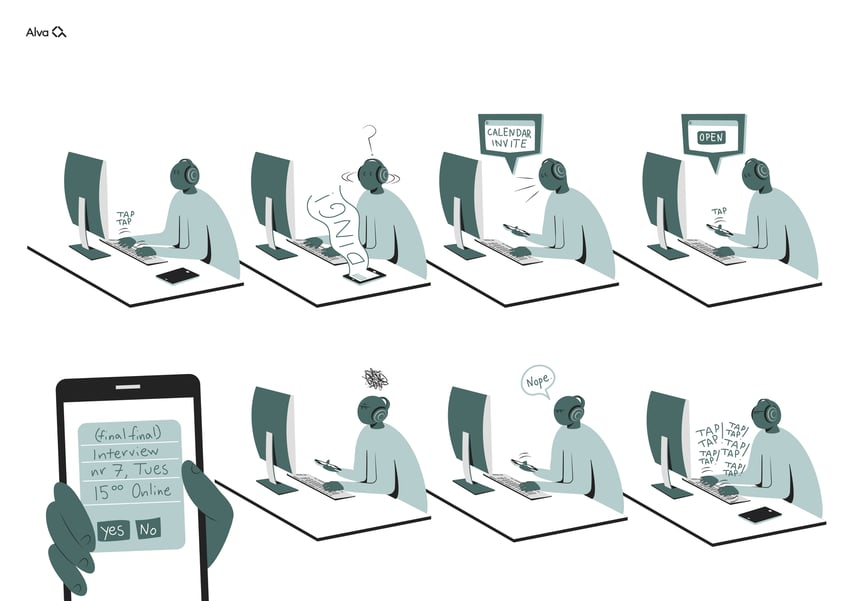All recruiters are pushed for time and want to know that they’re bringing in the right talent - we know that brilliant feeling when you find a person who’s going to be able to unleash their potential and get their maximum enjoyment from work. So here are some of our hard-won learnings from our last year of scaling (where we know we lost talent) that will help you to stop losing talent from your funnel and great great people into your teams.
Losing candidates before they apply?
1. How long is your application process?
How long is your application process? Is it fully mobile? If you don’t know how long your application process takes, consider that 60% of applicants abandon applications that take more than five minutes at the first stage.
There’s a mindset that says “We want to know that the candidate is desperate to work with us so let’s make the first stage really hard!”. Of course we know that engaged employees are 2.9 times more productive than their non-engaged peers; but more than that - we want every candidate to know that we value their time, we recognise their effort and we’re grateful that they shared with us.

However, we’d argue that that’s a question for the Interview stage of the funnel; opening it up so that diverse and wide-ranging groups of people can apply is more likely to find us a great match, than a mythical perfect candidate.
2. How recently have you looked at job titles?
Candidates might not be looking to make a jump from a similar role to the other; and if you’re not changing up job titles and descriptors, you’re showing that you’re not a future-facing organisation. So research, research.
3. You’re still leaning too heavily on years of experience
Do you really need 5 year’s experience for managerial? Emphasising years simply shuts the door on many people who might have no year’s experience - but all the potential. Consider why you’re leaning on this outdated metric and consider replacing with the skills that will comprise success.
4. Your advert doesn’t give enough information about the job, or the company culture
If you think your ads aren’t great, then ask someone in marketing to take a look with you and be willing to work with them to learn about how to make your language resonate with your audience. Or, if it’s the right fit for your brand, don’t be afraid to be funny; we love to be funny and make gags, because it lets people know what it’s like to work at Alva 😀🚀.
4. Your advert is using gendered language
Heavily gendered language dissuades women from applying to roles; a simple assessment and rewording could open your job up to 50% of the workforce.
Losing candidates in screening?
1. How often and how well are you communicating with candidates?
If there is one thing you can do right now to stop leaks in your talent funnel and maintain the strength of your employer brand, it’s to risk over-communicating with your candidates.

Do you want to be one of these companies who assumes everyone is dying to work with you but actually is leaving candidates - people - feeling ignored and worthless?
We like this rubric: Pre-empt the questions “when?” and “what?”
Some organisations feel that automated emails are too impersonal and risk damaging employer branding. But we all receive dozens of automated emails a day; most people are job-hunting generally. In our experience, well-written automated emails that provide candidates with timely status updates improve our candidate experience.
How do we know? Every month we have people who get in touch and apply to work at Alva because they’ve applied for a job elsewhere and were so positive about their experience that they apply to work with us.
2. Are you using systems that maintain bias against women and People of Colour?
Whether you’re using humans who, even with training, are statistically likely to still exhibit bias? Consider trialling a psychometric test, or investigate your ATS settings to make sure you’re not just automating affinity bias.
3. Are you thinking about your employer brand as a customer brand?
Employer and customer brands are closely linked and your customers may become candidates; you want unsuccessful candidates to still become customers, so be mindful of employer brand (and ask marketing for help if you need a steer).
Losing candidates between screening and interview?
1. Assess your turnaround times - and stick to them
Last spring we had a horrible realisation - we were losing candidates early on in the funnel; when we looked into the data and feedback, we found that we were taking too long to process people’s applications and really talented people were going elsewhere! We realised we needed to trim down our timelines, and let all hiring managers know about the change in pace - and why. Result? We now have a strict policy, and retention throughout the process has increased.
2. Feedback Schedule
- Application to feedback - no more than 14 days
- Interview to feedback - no more than 7 days (we always inform the candidate in the interview when they’ll hear back from us.
- Case study to feedback - around 3-4 days
If you wait too long to get back to a candidate after a case study - which is far on in the process - you send signals that the candidate was not that good and that you probably have other, more interesting, candidates.

The candidate will feel that you're not interested in taking their application further; if they end up with an offer from you and from another employer who's been more communicative, they're likely to go with their other employer who's treated them well.
3. Be clear in each in your expectations of each other as a hiring team
Before a recruitment is even started, be clear in your expectations of other teams - let the hiring managers know what is expected of them in terms of time to read, interview, and discuss. Block out the interview time in hiring manager’s calendars (or check they’ve done it).
Be realistic about needing time to properly discuss the candidates - now isn’t the time for knee-jerk gut reactions. Bad hires can cost around one third of an employee’s starting salary, and with 85% of hiring managers still relying on gut feeling, we as recruiters need to help hiring managers to think beyond affinity bias and consider what truly comprises a successful hire.
Losing candidate during the Interview stage?
1. Remember that your candidates are humans who also have jobs
Insisting that candidates attend several interviews between the hours of 9 & 5 is not respectful and you risk losing candidates.
2. How many interviews do you make your candidates attend? Be honest with yourself.
Two interviews and a case study are enough, period. Candidates are more likely to quit a process that feels unclear and un-strategic - would you want to work somewhere where your time wasn’t valued?
3. Keep to the schedule
When we’re small recruiting teams, we have to rely on our colleagues in other teams to get heavily involved with who they want to recruit. Makes sense!
But as the experts in the organisation, it’s essential to own our strategy and tactics in how to hire the best candidates.
But of course we need to collaborate with our hiring managers. Sometimes hiring managers might have different ideas about what comprises a good hire.
Remember that the hiring manager doesn’t have your expertise or training; break it down and take the hiring manager back to the basics of the core needs of the job, what will comprise success, and how best to get there.

Losing candidates at Case Study?
Take time to make sure your case study exercise is uncovering what you need.
A friend of mine recently finished a case study and was totally confused by what was being asked of her - she was going for an HR position, but the case was asking her to calculate estimated revenues and growth projections. Net result? She feels that her time was poorly spent, and she’s taking that experience out into the world with her.
No-one’s perfect - recently we realised that a case study we were running for a managerial role wasn’t providing us with the insights we needed. When the hiring manager looked again at the case study, she realised she was asking for how the candidate would deliver a strategy, when what we all needed to know was “Can this person do the work?” which, in this case, was to write. We changed the case study, started pulling in the insights we needed and found a great candidate!
By understanding the out-puts we need from every action and requiring every step of the hiring process to build upon the last, as recruiters we can stop talent from feeling fed up and ignored - and going elsewhere.
How to stop leaks before you start a hiring process
Being Alva, we say it’s more important to start off well and start out with a strategy before your job ad goes live (but we put this at the end because we figure you’re in a rush if you’re here).
Remember that candidates are just people who are looking for a job.
Be mindful that you’re going with people through - people before us have compared job-seeking to dating because in both cases you’re saying, over and over again: “Do you like me?”. It's hugely vulnerable.
Like any successful date, both parties need to agree if it’s a good match and to decide whether or not to move forwards together. But remember that the candidates are the ones putting themselves up for judgement - you’re the ones who have most of the power, most of the information and ability to change someone’s life. Use it responsibly.
6 golden rules to remember before hiring begins
- Remember that there is little difference between employer brand and customer brand
- Own the recruitment process and be ready to help hiring managers understand the strategy and tactics you’ve tested and validated
- Structure your process from job ad, through to screening and interviews before the ad goes live, and make as few adjustments and exceptions as possible, this will only confuse you and risk you losing candidates due to mistakes or omissions
- Plan how you’ll communicate openly with candidates
- Remember that not everyone can attend an interview at short notice, or between 9 & 5 - how can you help those candidates to reach interview?
- Have a strategy to mitigate the biases we all hold and build a diverse and robust workforce
We can’t fix every leak because, you know, we’re talking about people who make decisions that we can’t always predict (and we think that’s great). But, if your strategy isn’t going the way you hoped it would, and you need some fixes, get communicating, remember who your candidates are and help them to know that you care about their time, whether or not they’re the right fit for today.
(Looking to structure your interviews to help you find the right talent for your next hire? We got your back - download our totally free Google template to structured interviews here 👇👇)






